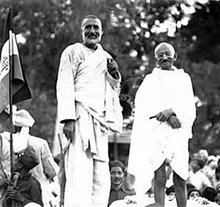
Old Bill Hearst is reputed to have said, "Furnish me the photos and I'll give you the war." The story about Hearst's role in whipping up public support for the Spanish-American war may well be apocryphal, but the point that the media plays a powerful part in shaping public perceptions of the War Industry's activities is not to be doubted.
Judging by the decision of Time Magazine's editors to run this photo on their August 9, 2010 cover, I think that it's fair to say that the recent postings by WikiLeaks has the War Industry nervous. Not that they are in any real danger of seeing their projects in Iraq, Afghanistan, and elsewhere scuttled but, as this editorial decision suggests, they are taking no chances.
By exposing the fact that US forces and their corporate allies are quite capable of committing atrocities against the peoples they claim to be liberating or protecting, WikiLeaks has attempted to jump-start public debate about the on-going war effort. Unlike WikiLeaks, major media outlets in the US have worked very hard to keep any such debate minimized, marginalized and, at all costs, contained.
Had the editors of Time wished to see the American public take WikiLeaks' exposures seriously, they could have published a cover story with photos depicting the mangled bodies of Afghan women and children after a US drone strike. Or they could have reproduced photos that one can find on the internet of American servicemen and women with their faces obscured by camouflage war-paint or strategically smudged out as they gang rape and sodomize Iraqi women. One assumes that such photos are taken by US military personnel for their own enjoyment and proudly published on the net by the culprits themselves--otherwise, why do they take steps to disguise their identities?
At any rate, Time clearly chose a different route.
I do not contest the magazine's right to publish the photo which "graces" the August 9, 2010 cover; but I do question the timing. Since 2001, the Afghan war has been portrayed by its proponents as the "good" war. The US War Industry is determined that it continue to be imagined in that way. Never mind the fact that, whenever and wherever there is war, atrocities occur on all sides. We are asked to politely turn away from the atrocities committed by our own soldiers and to focus instead upon those committed by our declared enemies. As if anyone who objects to the Afghan War believes that the Taliban are a bunch of boy scouts.
The criminals responsible for disfiguring Time's August 9th cover model ought to be apprehended, fairly tried, and punished. Some of the questions that the American public ought to be asking itself are these: whose responsibility is it to stop criminal activity in Afghanistan? Is it possible that the presence of NATO troops in Afghanistan is an aggravating factor in the culture of violence that has racked that country since the US fought its proxy war against the Soviets there in the 1980's?
The evidence suggests that the presence of foreign troops on Afghan soil has done little to damage the Taliban's appeal to the general Afghan populace and, in fact, has even helped to improve their image since they were driven from power in 2001. Indeed, before the US invasion in 2001, the Taliban were doing an excellent job of discrediting themselves in the eyes of Afghans--what with their brutal methods of social control and their inability to assuage the sufferings of the Afghan people due to poverty and drought.
The US invasion in 2001 turned the Taliban from an idealistic but inept and often savagely cruel government into an anti-occupation insurgency. "Re-branded" (to use the current War Industry jargon) as such, the Taliban has been winning the hearts and minds of ordinary Afghans ever since.
Time's August 9, 2010 cover is an attempt by a media outlet ally of the militarized corporatocracy that runs our government to protect its Afghan brand: we're there to save Afghan women. If, on occasion, some of those women are collaterally slaughtered or sodomized, well, it's a small price to pay.
For what? That's another question we are not supposed to ask.
Time's editors understand only too well how a single picture is worth a thousand words. And with WikiLeaks dumping millions of leaked words onto its web-site--words that require careful thought, interpretation, and deliberation--the most swift and effective reply is to publish a photo that will short-circuit thought, interpretation, deliberation and, instead, induce a visceral reaction: LOOK AT WHAT THESE CRIMINALS HAVE DONE! WE MUST NOT PULL OUT!
But what about the crimes our own soldiers and mercenaries have committed against the Afghan people?
SILENCE.
STONEWALL.
NOT A WORD (and most certainly) NOT A PHOTO.
Mark Twain defined a patriot as the person who can holler the loudest without knowing what he is hollering about.
Time's August 9, 2010 cover doesn't just holler; it screams like a banshee. But the realities of the Afghan War and the US role in it cannot be adequately assessed by the American public amid such media noise.
Which is precisely the effect Time's editors were hoping for.



No comments:
Post a Comment